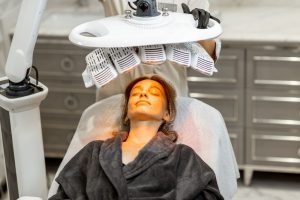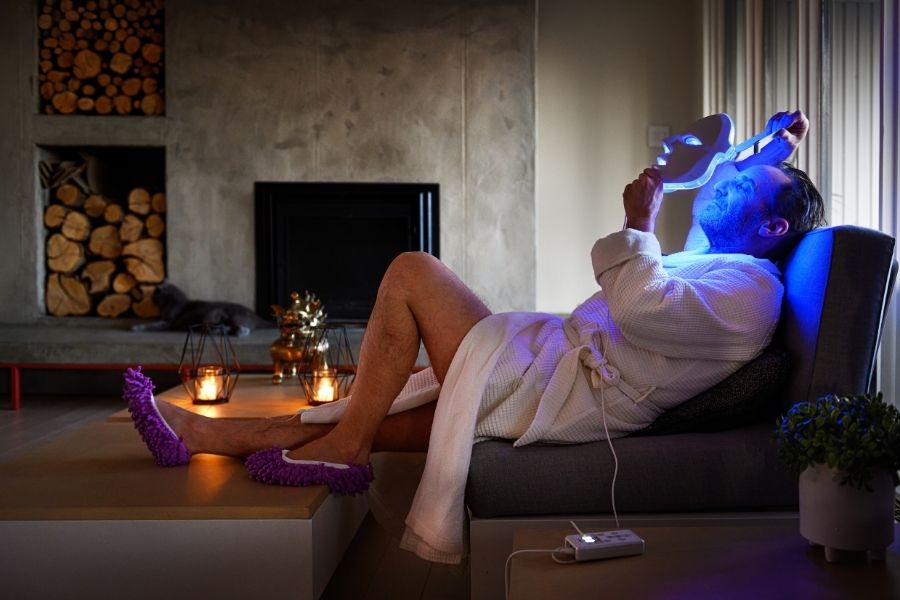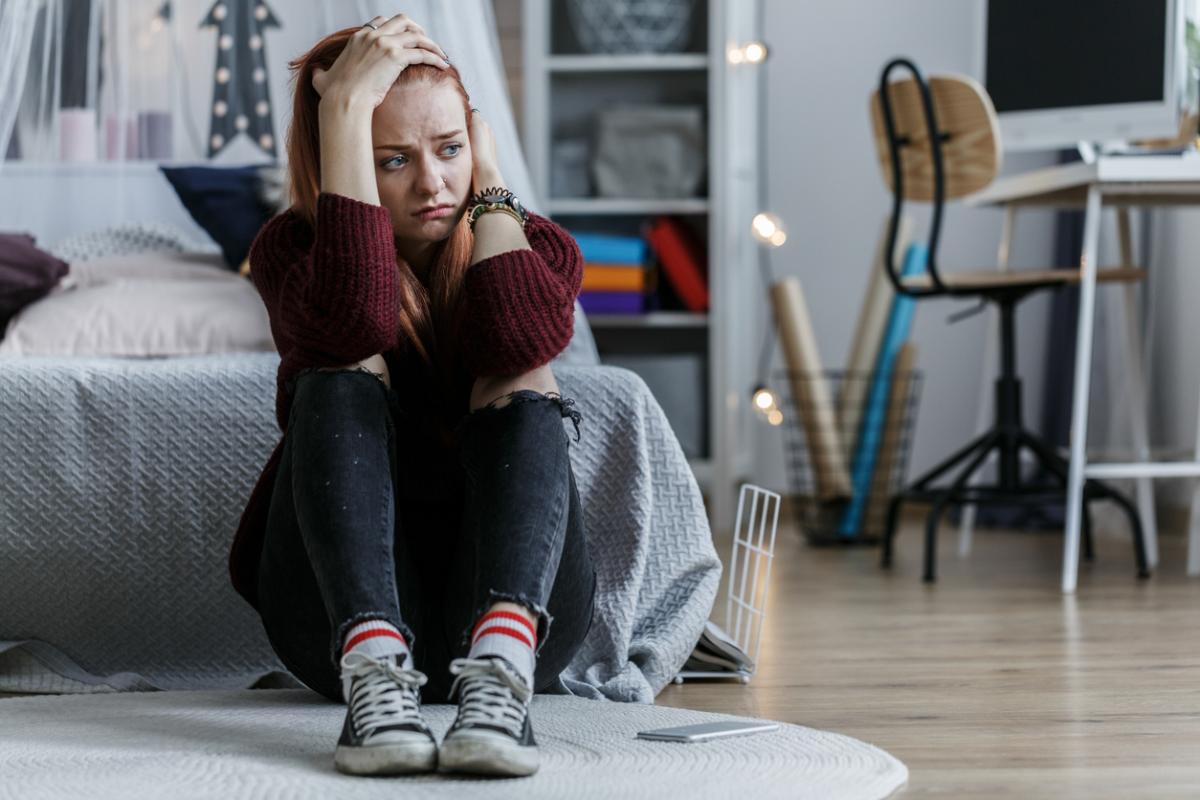In the ever-evolving field of medicine, innovative therapies continue to emerge, offering hope and relief to those facing various health challenges. One such treatment gaining popularity is light therapy, also known as phototherapy or bright light therapy.
This approach utilizes specific wavelengths of light to address various conditions and improve overall well-being.
The best light therapy lamps have a deeper side to them and sure have some attractive benefits. We’ll explore every bit of this treatment, including its applications and the science behind its efficacy.
Ready?
What Is Light Therapy?
Light treatment involves controlled exposure to intense and specific wavelengths of light, typically through specialized light boxes or lamps.
These devices emit light that mimics natural sunlight but excludes harmful ultraviolet (UV) rays. Light therapy is a powerful tool for treating several health conditions.
The effectiveness of light therapy lies in its ability to impact the body’s biological processes and circadian rhythms. Exposure to bright light stimulates the retina, which sends signals to the suprachiasmatic nucleus (SCN) – the “master clock” in the brain – responsible for regulating the body’s internal clock.
This, in turn, influences the secretion of hormones like melatonin and serotonin, which are crucial in determining sleep patterns and mood.
What Does Light Therapy Do?
By exposing individuals to controlled and intense light sources, typically through a specialized light box or lamp, light therapy can produce a range of positive effects on mental and physical well-being.
One of the primary applications of light therapy is treating Seasonal Affective Disorder (SAD). SAD is a type of depression that occurs during the fall and winter months with less natural sunlight.
The lack of the sun can disrupt the body’s internal clock, leading to changes in hormone production and neurotransmitter levels. Light therapy stimulates the retina, which sends signals to the brain’s suprachiasmatic nucleus (SCN), the master clock that regulates circadian rhythms.
This stimulation restores the balance of serotonin and melatonin, neurotransmitters responsible for mood regulation and sleep-wake cycles. It, therefore, alleviates SAD symptoms like low mood, fatigue, and sleep disturbances.
For individuals with circadian rhythm disorders, light therapy offers a practical solution. Shift workers, and those with advanced sleep phase syndrome can experience disruptions in their natural sleep-wake cycles. By carefully timed exposure to bright light, these individuals can realign their internal clocks, facilitating better functioning during unconventional waking hours and improved sleep during rest periods.
Additionally, light therapy finds application in dermatology, specifically in treating certain skin conditions like skin cancer or psoriasis. Phototherapy using controlled doses of ultraviolet (UV) light slows down the growth of affected skin cells and reduces inflammation, relieving symptoms in patients with psoriasis.
What Are The Benefits of Light Therapy
Like vaping has incredible health benefits, light therapy also offers a range of benefits across different health conditions and wellness areas. Some of the key benefits of light therapy include:
Seasonal Affective Disorder (SAD) Relief
One of the primary applications of light therapy is the treatment of Seasonal Affective Disorder. Light therapy helps alleviate SAD symptoms, including low mood, fatigue and disrupted sleep patterns. The treatment provides exposure to bright light, particularly during the fall and winter when natural sunlight is limited. It can improve well-being and restore a more positive outlook during darker seasons.
Moreover, it may relieve the irritable nature or social withdrawal associated with Autism Spectrum Disorders in children and adolescents.
Improved Sleep Quality
Light therapy is effective in regulating circadian rhythms and sleep-wake cycles. It’s particularly great for people with sleep disorders like insomnia or delayed sleep phase syndrome. Exposure to bright light in the morning synchronizes their body system, leading to better sleep patterns.
Mood Enhancement
Beyond its application in SAD, light therapy session has shown promising results in non-seasonal depression. It stimulates the production of serotonin, a neurotransmitter that plays a crucial role in regulating mood. This boosts mood and reduces symptoms of depression in some individuals.
Enhanced Energy and Alertness
Regular light therapy sessions boost energy levels and increase feelings of alertness. This is particularly beneficial for individuals with jet lag, shift work, or those who experience daytime drowsiness.
Regulation of Circadian Rhythms
For people with circadian rhythm disorders like shift work disorder or advanced sleep phase syndrome, light therapy resets their internal body clocks. It also aligns them with their desired sleep-wake schedule. Therefore, it aids functioning during wakeful hours and better sleep during rest periods.
Treatment of Skin Conditions
Light therapy, especially phototherapy using ultraviolet light, has proven effective in treating certain skin conditions like psoriasis. Controlled exposure to UV light slows down the growth of affected skin cells and reduces inflammation, relieving patients with skin disorders.
Non-Invasive and Safe Treatment
Light therapy is generally safe when used correctly under healthcare professionals’ guidance. Unlike some other treatments, it does not involve invasive procedures or medications, making it a more appealing option for most people.
Convenience and Accessibility
Light therapy can often be conducted at home using light therapy boxes or lamps, making it a convenient and accessible treatment option for many people.
Potential for Various Applications
While light therapy is well-known for its applications in mental health and sleep disorders, ongoing research explores its potential benefits in other areas. For instance, there’s a possibility it treats certain neurological conditions, bipolar disorder, and even some forms of dementia.
What Are The Different Types Of Light Therapy?

There are several types of LED light therapy, each utilizing different wavelengths of light and serving various purposes. The types of light-emitting diode therapy include:
Bright Light Therapy (BLT)
Also known as phototherapy, this is the most common form of light therapy. Bright light therapy involves exposure to a high-intensity light therapy lamp that emits a controlled amount of bright white light. It is primarily used to treat Seasonal Affective Disorder (SAD), other mood-related disorders, sleep disorders, and circadian rhythm disorders.
Dawn Simulation Therapy
This form of light therapy simulates a natural sunrise. A dim light gradually increases in intensity throughout 30 to 60 minutes, mimicking the rising sun. Dawn simulation therapy benefits people with difficulty waking up in the morning or those experiencing SAD symptoms.
Blue Light Therapy
Blue light therapy uses a narrow band of blue light to treat certain skin conditions, such as acne vulgaris. The blue light targets the bacteria responsible for acne, reducing inflammation and promoting healing.
Red Light Therapy
Red light therapy utilizes low-level red or near-infrared light treatment to promote tissue repair, reduce inflammation, and improve skin health. It is used in dermatology for wound healing, psoriasis, and skin rejuvenation.
Green Light Therapy
This therapy has potential benefits in managing chronic pain and migraines. The exact mechanism of action is not yet fully understood, but it appears to have a calming effect on the nervous system.
Full-Spectrum Light Therapy
Full-spectrum light therapy aims to replicate natural sunlight, providing a broader range of wavelengths, including UVA and UVB rays. It is sometimes helpful for conditions that may benefit from exposure to the full spectrum of light.
UV Light Therapy (Ultraviolet Phototherapy)
It involves the controlled use of ultraviolet (UV) light to treat certain skin disorders like psoriasis, vitiligo, and eczema. It can help slow down skin cell growth and reduce inflammation.
Low-Level Laser Therapy (LLLT)
Also known as cold laser therapy, LLLT uses low-level lasers or light-emitting diodes (LEDs) to stimulate cellular activity and promote tissue healing. It is commonly used in physical therapy for musculoskeletal conditions and sports injuries.
Infrared Light Therapy
Infrared light therapy uses light in the infrared spectrum to penetrate deeper into tissues, providing pain relief, muscle relaxation, and improved circulation.
Bottom Line
Just as you can rewrite the history of your genes, you can tap into great therapeutic potential with light therapy. The benefits are almost endless. It regulates circadian rhythms, impacts neurotransmitter levels, and influences hormonal balance. Thus, it relieves those facing Seasonal Affective Disorder, sleep disorders, non-seasonal depression, circadian rhythm disorders, and certain skin conditions.
Nevertheless, self-medication is quite dangerous. That’s why we suggest consulting with healthcare professionals to determine the most appropriate treatment plan for individual cases. And ensure light therapy lamps’ safe and effective use.




